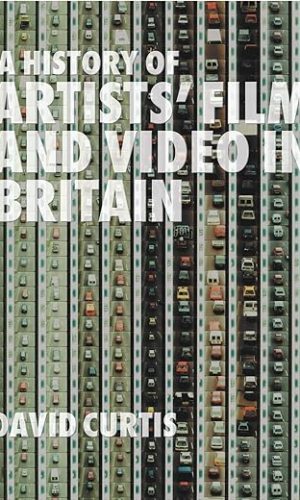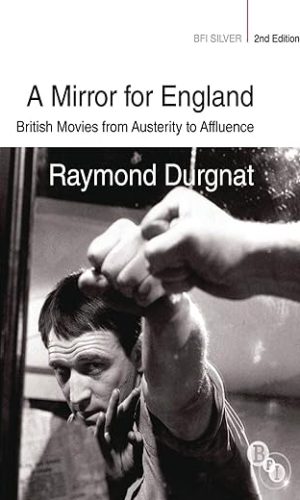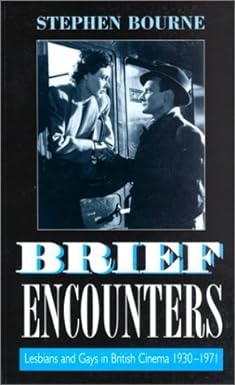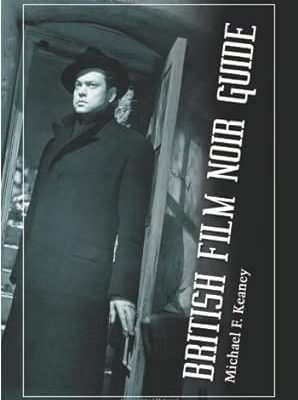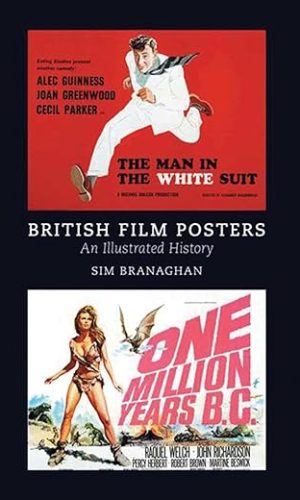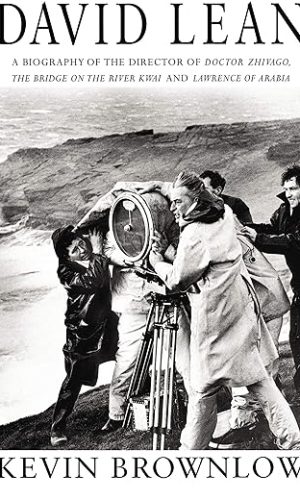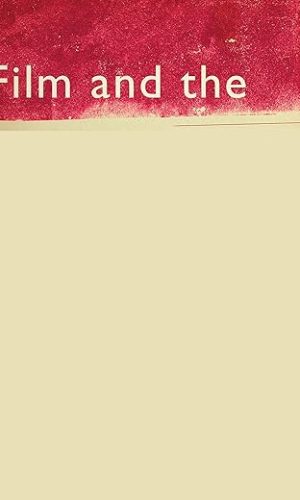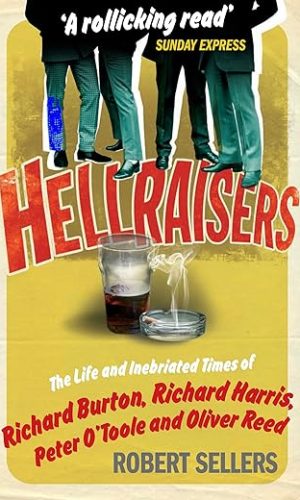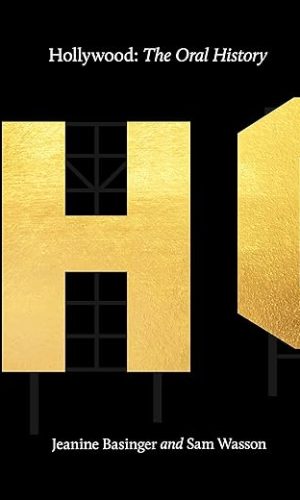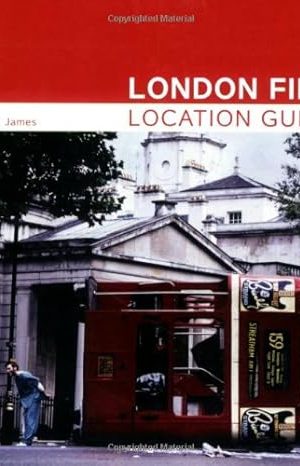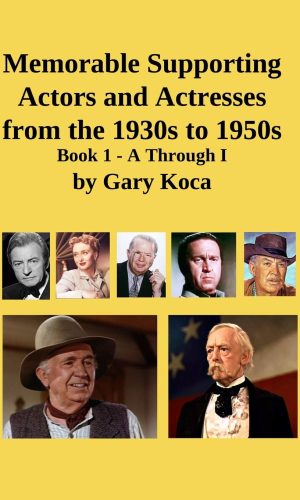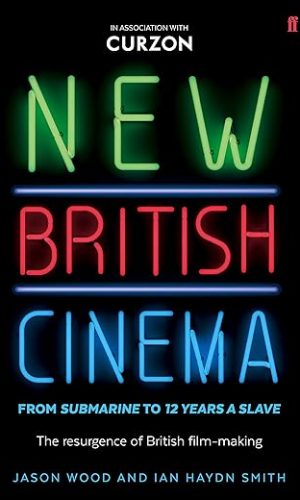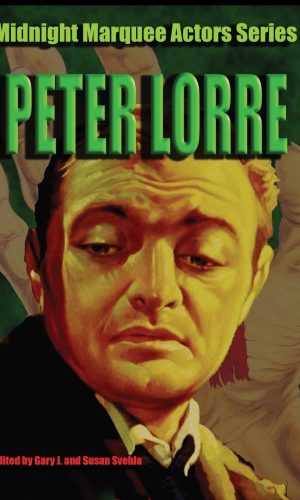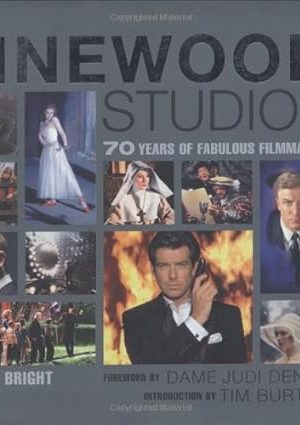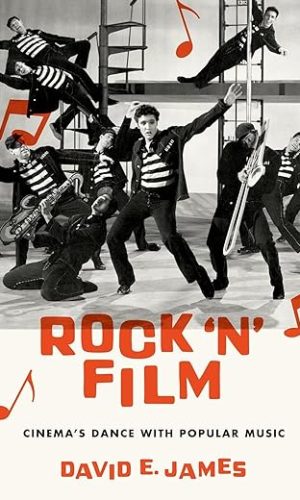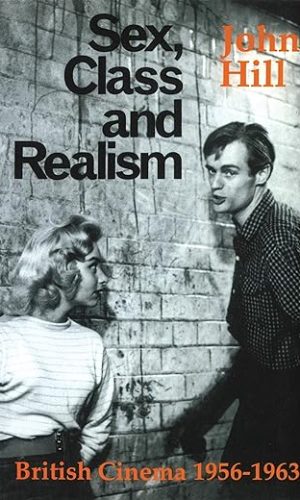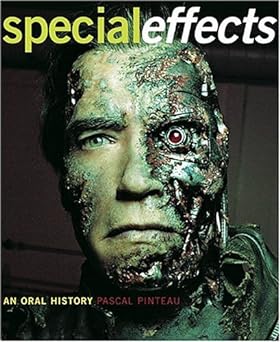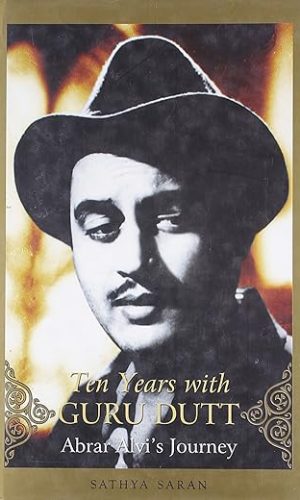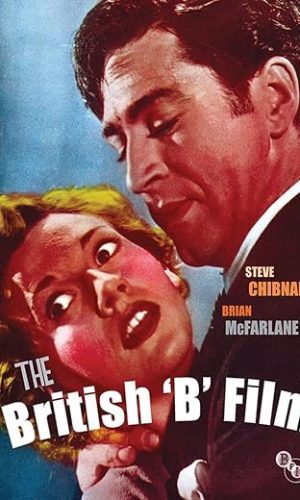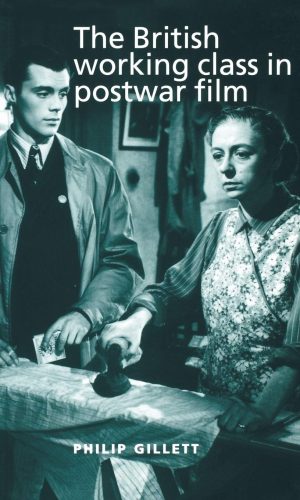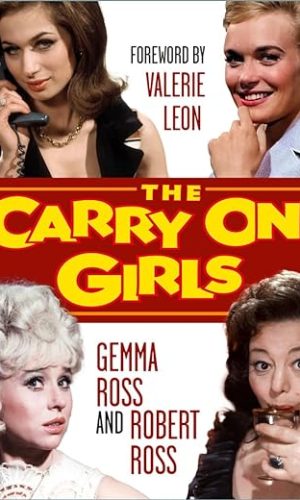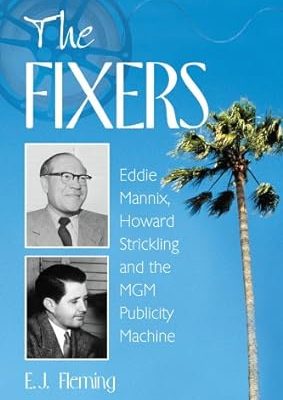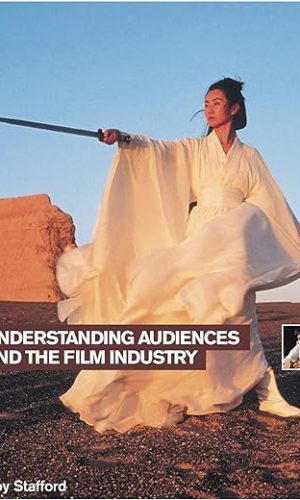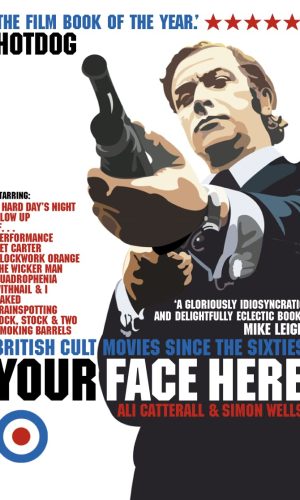History & Criticism
-
A British Picture: An Autobiography
With a foreword by Melvyn Bragg. The updated autobiography of Britain’s most controversial film director. Moving with astonishing assurance through time and space, Russell recreates his life in a series of interconnected episodes – his 30s childhood in Southampton, his first sexual experience (watching Disney’s Pinocchio), his schooldays at the Nautical College, Pangbourne and early careers in the Merchant Marines and the Royal Air Force. Full of marvellously funny anecdotes and fascinating insights, this is a remarkable autobiography.Read more
£19.00 -
A History of Artists’ Film and Video in Britain
In recent years the use of film and video by British artists has come to widespread public attention. Jeremy Deller, Douglas Gordon, Steve McQueen and Gillian Wearing all won the Turner Prize (in 2004, 1996, 1999 and 1997 respectively) for work made on video. This fin-de-siecle explosion of activity represents the culmination of a long history of work by less well-known artists and experimental film-makers. Ever since the invention of film in the 1890s, artists have been attracted to the possibilities of working with moving images, whether in pursuit of visual poetry, the exploration of the art form’s technical challenges, the hope of political impact, or the desire to re-invigorate such time-honoured subjects as portraiture and landscape. Their work represents an alternative history to that of commercial cinema in Britain – a tradition that has been only intermittently written about until now. This major new book is the first comprehensive history of artists’ film and video in Britain. Structured in two parts (‘Institutions’ and ‘Artists and Movements’), it considers the work of some 300 artists, including Kenneth Macpherson, Basil Wright, Len Lye, Humphrey Jennings, Margaret Tait, Jeff Keen, Carolee Schneemann, Yoko Ono, Malcolm Le Grice, Peter Gidal, William Raban, Chris Welsby, David Hall, Tamara Krikorian, Sally Potter, Guy Sherwin, Lis Rhodes, Derek Jarman, David Larcher, Steve Dwoskin, James Scott, Peter Wollen and Laura Mulvey, Peter Greenaway, Patrick Keiller, John Smith, Andrew Stones, Jaki Irvine, Tracy Emin, Dryden Goodwin, and Stephanie Smith and Ed Stewart. Written by the leading authority in the field, A History of Artists’ Film and Video in Britain, 1897-2004 brings to light the range and diversity of British artists’ work in these mediums as well as the artist-run organisations that have supported the art-form’s development. In so doing it greatly enlarges the scope of any understanding of ‘British cinema’ and demonstrates the crucial importance of the moving image to British art history.Read more
£33.20 -
A Mirror for England: British Movies from Austerity to Affluence (BFI Silver)
Raymond Durgnat’s classic study of British films from the 1940s to the 1960s, first published in 1970, remains one of the most important books ever written on British cinema. In his introduction, Kevin Gough-Yates writes: ‘Even now, it astounds by its courage and its audacity; if you think you have an ‘original’ approach to a filmor a director’s work and check it against A Mirror for England, you generally discover that Raymond Durgnat had said it already.’ Durgnat himself said about the book that ‘the main point was arranging a kind of rendezvous between thinking about movies and thinking, not so much about sociology, as about the experiences that people are having all the time.’ Durgnat used Mirror to assert the validity of British cinema against its dismissal by the critics of Cahiers du cinéma and Sight and Sound. His analysis takes in classics such as In Which We Serve (1942), A Matter of Life and Death (1946) and The Blue Lamp (1949), alongside ‘B’ films and popular genres such as Hammer horror. Durgnat makes a cogent and compelling case for the success of British films in reflecting British predicaments, moods and myths, at the same time as providing some disturbing new insights into a national character by whose enigmas and contradictions we continue to be perplexed and fascinated.Read more
£23.70 -
An Autobiography of British Cinema (Methuen film)
This volume of first-hand reminiscences, celebrating 50 years of British filmmaking, records the Golden Age of British Cinema as remembered by 180 great and best-loved names of the British cinema, including Lindsay Anderson, Dirk Bogarde, Julie Christie, Alec Guinness, Thora Hird, Richard Attenborough, Glenda Jackson, Sarah Miles, Richard Todd, Michael Caine, Moira Shearer and Norman Wisdom, plus a whole new generation of British filmmakers and actors like Sally Potter, Kenneth Branagh, Derek Jarman, Peter Greenaway, Emma Thompson and Stephen Frears.Read more
£3.20 -
Brief Encounters: Lesbians and Gays in British Cinema, 1930-71 (Film studies)
An examination of lesbian and gays in British cinema, this book explores a range of lesbian and gay screen images from such diverse films as “Soldiers of the King”, “Pygmalion”, “Dangerous Moonlight”, “Blithe Spirit”, “Brief Encounter”, and “The Servant”, revealing a vital, varied and sensuous cinema. Arranged chronologically, and examining performers, directors and over 150 famous, half-remembered and forgotten films, the book forms a celebration of the contribution of gays and lesbians to British cinema culture. It includes an appendix of gay men’s reactions to “Victim”, the landmark Dirk Bogart film.Read more
£8.20 -
British Cinema of the 90s (Distributed for British Film Institute)
This work examines major box office hits like ‘The Full Monty’ as well as critically acclaimed films like ‘Under the Skin’. It explores the role of distribution and exhibition, the Americanisation of British film culture, Hollywood and Europe, changing representations of sexuality and ethnicity.Read more
£26.60 -
British Film Noir Guide
This work presents 369 British films produced between 1937 and 1964 that embody many of the same filmic qualities as those “”black films”” made in the United States during the classic film noir era. This reference work makes a case for the inclusion of the British films in the film noir canon, which is still considered by some to be an exclusively American inventory. In the book’s main section, the following information is presented for each film: a quote from the film; the title and release date; a rating based on the five-star system; the production company, director, cinematographer, screenwriter, and main performers; and a plot synopsis with author commentary. Appendices categorize films by rating, release date, director and cinematographer and also provide a noir and non-noir breakdown of the 47 films presented on the Edgar Wallace Mystery Theatre, a 1960s British television series that was also shown in the United States.Read more
£28.50£30.90British Film Noir Guide
£28.50£30.90 -
British Film Posters: An Illustrated History
The first complete history of illustrated film posters in the UK covers every aspect of design, printing and display from the Victorian era to the arrival of DeskTop Publishing in the 1980s. British Film Posters examins the contribution ‘vintage’ film posters have made to British popular art of the 20th century.Read more
£32.30 -
Burn It Down: Power, Complicity, and a Call for Change in Hollywood
NEW YORK TIMES BESTSELLER • LOS ANGELES TIMES BESTSELLER
In this spectacular, newsmaking exposé that has the entertainment industry abuzz and on its heels, Vanity Fair’s Maureen Ryan blows the lid off patterns of harassment and bias in Hollywood, the grassroots reforms under way, and the labor and activist revolutions that recent scandals have ignited.
It is never just One Bad Man.
Abuse and exploitation of workers is baked into the very foundations of the entertainment industry. To break the cycle and make change that sticks, it’s important to stop looking at headline-making stories as individual events. Instead, one must look closely at the bigger picture, to see how abusers are created, fed, rewarded, allowed to persist, and, with the right tools, how they can be excised.
In Burn It Down, veteran reporter Maureen Ryan does just that. She draws on decades of experience to connect the dots and illuminate the deeper forces sustaining Hollywood’s corrosive culture. Fresh reporting sheds light on problematic situations at companies like Lucasfilm and shows like Lost, Saturday Night Live, The Goldbergs, Sleepy Hollow, Curb Your Enthusiasm and more.
Interviews with actors and famous creatives like Evan Rachel Wood, Harold Perrineau, Damon Lindelof, and Orlando Jones abound. Ryan dismantles, one by one, the myths that the entertainment industry promotes about itself, which have allowed abusers to thrive and the industry to avoid accountability—myths about Hollywood as a meritocracy, what it takes to be creative, the value of human dignity, and more.
Weaving together insights from industry insiders, historical context, and pop-culture analysis, Burn It Down paints a groundbreaking and urgently necessary portrait of what’s gone wrong in the entertainment world—and how we can fix it.
Read more
£16.50£23.80 -
David Lean
In the course of his career, David Lean created some of the most unforgettable images in cinema history: the terrifying opening graveyard sequence in Great Expectations, the poignant railway farewell in Brief Encounter, the shimmering desert of Lawrence of Arabia and the frozen expanses of revolutionary Russia in Dr Zhivago.
Film-maker and historian Kevin Brownlow spent many hours with Lean, who talked openly about a career which lasted over 50 years. Furthermore, Lean’s family and friends – from the son from whom he was estranged, to the women who loved him – talk frankly about his complex personality: a man who was charming, self-deprecating, autocratic and ruthless, and yet surprisingly generous. Brownlow’s definitive biography of Lean leaves the reader with an understanding of the man and an appreciation of his cinematic achievement.
Read more
£4.90David Lean
£4.90 -
Film and the End of Empire (Cultural Histories of Cinema)
In these two volumes of original essays, scholars from around the world address the history of British colonial cinema stretching from the emergence of cinema at the height of imperialism, to moments of decolonization andthe ending of formal imperialism in the post-Second World War.Read more
£10.20 -
Hellraisers: The Life and Inebriated Times of Burton, Harris, O’Toole and Reed
‘God put me on this earth to raise sheer hell.’ Richard Burton
‘I was a sinner. I slugged some people. I hurt many people. And it’s true, I never looked back to see the casualties.’ Richard Harris
‘Booze is the most outrageous of all drugs, which is why I chose it.’ Peter O’Toole
‘I don’t have a drink problem. But if that was the case and doctors told me I had to stop I’d like to think I would be brave enough to drink myself into the grave.’ Oliver ReedThis is the story of four of the greatest thespian boozers who ever walked – or staggered – off a film set into a pub. It’s a story of drunken binges of near biblical proportions, parties and orgies, broken marriages, drugs, riots and wanton sexual conquests. They got away with it because of their extraordinary acting talent and because the public loved them. They were truly the last of a breed, the last of the movie hellraisers.
Read more
£9.40£10.40 -
Hollywood: The Oral History
Hollywood: The Oral History covers the history of Hollywood from the Silent era up to the 21st century.
What makes this book unique from any other survey of Hollywood’s history is that it is the history of an art form through the words of those people who created it – from Harold Lloyd to Katharine Hepburn to Warren Beatty to Jane Fonda and beyond, including directors, writers, producers, editors, designers of sets and costumes.
As such, the authenticity of the text is irrefutable.
The material in the book – gathered over the decades by the American Film Institute – has never been published before, has never been heard before.It is comprehensive – a monument that will never age nor be surpassed.
Read more
£15.10£23.80Hollywood: The Oral History
£15.10£23.80 -
London Film Location Guide
This intriguing guide to London locations used in movies covers the whole of the metropolis area by area, so you’ll be able to find streets where you live, work or play, whether in Chelsea, Greenwich or Whitechapel. The book reveals the cinematic moments of a range of named streets, pubs, libraries, shops and offices that Londoners know and love. The book includes ‘then’ and ‘now’ photographs – stills from the films and the same locations photographed recently. A comprehensive index enables you to easily find the streets and areas that you know.
The films featured include those famously set in London – ‘Notting Hill’, ‘Love Actually’, ‘Patriot Games’, ‘Alfie’, ‘Basic Instinct 2’ – as well as those that contained seminal scenes set in the capital. Some interesting shots of London mocked up to look like foreign climes, from Amsterdam to Vietnam. The author’s painstaking research covers films from the 1940s and 1950s – including the great Ealing productions – right up to the recent Shaun of the Dead.
The book offers delights for both film buffs and London enthusiasts.
Read more
£3.30 -
Memorable Supporting Actors and Actresses from the 1930s to 1950s: Book 1 – A Through I
My previous books on Forgotten Movie Stars of the 1930s through 1950s have focused on the leading men and women of that era. While those individuals are pretty much the movie stars that we remember, their films would have gone nowhere without the contributions of supporting actors and actresses who made their movies great. After all, what would Casablanca have been without Claude Rains? The Manchurian Candidate without Angela Lansbury? The leading ladies and leading men could get by with their good looks, charisma, and not always great acting ability. On the other hand, supporting actors and actresses HAD to know how to act. And so, this book is a tribute to some of the greatest supporting actors of the classic film era in Hollywood from the 1930s through 1950s. Again, as in all my books, the people selected are based on my personal preferences. There are some people who probably should be in the book – Beulah Bondi comes to mine – but I just have not seen enough of her films to include her. You, the reader, may agree with some and disagree with others. That is your prerogative. I also never make a claim to have seen every film or actors from that era, but these are just the folks that have appealed to me. For each of these individuals, I have included some biographical information, including how they got their start in films: my favorite films of each individual; and other interesting notes about the person.Read more
£10.20 -
Movie Critic Notebook: Movie Tracker Log book for Film Buffs and Casual Movie Watchers – Movie Rating Journal to Rate & Record Details About the Movies You Watch
Click on “Look Inside” (on the main image) to get familiar with the pages.
The PERFECT notebook for movie buffs and aspiring movie critics! Or for everyone who loves movies and loves talking about their contents.
This Movie Critic Notebook is a perfect way to track and write your movie reviews about movies you have seen. Sometimes it’s hard to remember all the details you want to remember.
Features:
✻ Template pages with space to record details for 100 movies, altogether 109 pages,
✻ Large 8.5″ x 11″ (22 x 28 cm) size,
✻ An Index with rating to find back your favorite movies,
✻ Record following details: Title Date & time; Rating (G, PG, G 13, R); Genre/Style; Storyline or plot; Memorable Quotes; Your critic thoughts
Space to write the names of Director, Cast, Screenplay, Cinematography, Music, Awards received.
A must for film students and aspiring filmmakers!Read more
£4.70 -
New British Cinema from ‘Submarine’ to ’12 Years a Slave’: The Resurgence of British Film-making
Over the past year the success of British films at international film festivals – as well as the numerous awards bestowed on 12 Years a Slave – have demonstrated that British cinema has undergone a genuine renaissance that has caused new voices to emerge. At the same time, directors whose work have enthralled over the past five years have also continued to develop and expand their visions.
The boundaries of British film-making are being redefined.
Beginning with an Introduction exploring some of the factors that have led to this fertile environment, New British Cinema features in-depth interviews with the film-making voices at the vanguard of this new wave. Figures such as Clio Barnard, Richard Ayoade, Steve Mcqueen, Jonathan Glazer, Carol Morley, Yann Demange, Peter Strickland and Ben Wheatley provide a valuable insight into their work and working methods.
Collectively, the film-makers who feature in this book symbolize the incredible breadth and diversity to be found in British cinema today.
Read more
£12.40£17.10 -
Peter Lorre: MMAS: Midnight Marquee Actors Series
After coverning horror film icons Bela Lugosi, Boris Karloff, Lon Chaney, Jr. and Vincent Price, Midnight Marquee Press wanted to go in a slightly different direction for our fifth edition of the Actors Series, by highlighting quasi-horror man Peter Lorre. While the other entries in the series were predominantly horror film actors, Peter Lorre made many horror film appearances, but was never actually considered a horror film star. Instead, it was Lorre’s persona, that of a quirky, deviant little man, sometimes charming, sometimes boiling over with venom, that made him a perfect match for horror films. However, Lorre also played opposite such mainstream stars as Clark Gable, Humphrey Bogart, Sydney Greenstreet, Kirk Douglas, Mickey Rooney and Bob Hope. Lorre felt just as comfortable enacting supporting roles in A films as he did starring in the Bs. This book takes an in-depth look at the film work of this versatile performer by providing analyses of films such as M, Mad Love, The Face Behind the Mask, The Maltese Falcon, The Raven and The Comedy of Terrors as well as many of the other films that made Peter Lorre a film legend.Read more
£18.60£33.30Peter Lorre: MMAS: Midnight Marquee Actors Series
£18.60£33.30 -
Pinewood Studios, 70 Years of Fabulous Filmaking: 70 Years of Fabulous Film Making
Some of the worlds most successful films have been made at Pinewood. Superman, Batman, Harry Potter, The Da Vinci Code and the ever popular Bond films, from the first Dr. No in 1962 right up to the highly acclaimed Casino Royale of 2006. Not content to rest on it’s laurels, Pinewood today is going from strength to strengh with the very latest cutting-edge technology and production standards. This fabulous celebration of it’s first 70 years pays fitting tribute to the past but also looks towards what the future promises for this renowned film institution.Read more
£28.50 -
Rock ‘N’ Film: Cinema’s Dance With Popular Music
For two decades after the mid-1950s, biracial popular music played a fundamental role in progressive social movements on both sides of the Atlantic. Balancing rock’s capacity for utopian popular cultural empowerment with its usefulness for the capitalist media industries, Rock ‘N’ Film explores how the music’s contradictory potentials were reproduced in various kinds of cinema, including major studio productions, minor studios’ exploitation projects, independent documentaries, and the avant-garde.
These include Rock Around the Clock and other 1950s jukebox musicals; the films Elvis made before being drafted, especially King Creole, as well as the formulaic comedies in which Hollywood abused his genius in the 1960s; early documentaries such as The T.A.M.I. Show that presented James Brown and the Rolling Stones as the core of a black-white, US-UK cultural commonality; A Hard Day’s Night that marked the British Invasion; Dont Look Back, Monterey Pop, Woodstock, and other Direct Cinema documentaries about the music of the counterculture; and avant-garde films about the Rolling Stones by Jean-Luc Godard, Kenneth Anger, and Robert Frank.
After the turn of the decade, notably Gimme Shelter, in which the Stones appeared to be complicit in the Hells Angels’ murder of a young black man, 1960s’ music-and films about it-reverted to separate black and white traditions based respectively on soul and country. These produced blaxploitation and Lady Sings the Blues on the one hand, and bigoted representations of Southern culture in Nashville on the other. Ending with the deaths of their stars, both films implied that rock ‘n’ roll had died or even, as David Bowie proclaimed, that it had committed suicide. But in his documentary about Bowie, Ziggy Stardust and the Spiders from Mars, D.A. Pennebaker triumphantly re-affirmed the community of musicians and fans in glam rock.
In analyzing this history, David E. James adapts the methodology of histories of the classic film musical to show how the rock ‘n’ roll film both displaced and recreated it.
Read more
£19.00 -
Seventies British Cinema
Seventies British Cinema provides a comprehensive re-evaluation of British film in the 1970s. The decade has long been written off in critical discussions as a ‘doldrums’ period in British cinema, perhaps because the industry, facing near economic collapse, turned to ‘unacceptable’ low culture genres such as sexploitation comedies or extreme horror. The contributors to this new collection argue that 1970s cinema is ripe for reappraisal: giving serious critical attention to populist genre films, they also consider the development of a British art cinema in the work of Derek Jarman and Peter Greenaway, and the beginnings of an independent sector fostered by the BFI Production Board and producers like Don Boyd. A host of highly individual directors managed to produce interesting and cinematically innovative work against the odds, from Nicolas Roeg to Ken Russell to Mike Hodges. As well as providing a historical and cinematic context for understanding Seventies cinema, the volume also features chapters addressing Hammer horror, the Carry On films, Bond films of the Roger Moore period, Jubilee and other films that responded to Punk rock; heritage cinema and case studies of key seventies films such as The Wicker Man and Straw Dogs. In all, the book provides the final missing piece in the rediscovery of British cinema’s complex and protean history. Contributors: Ruth Barton, James Chapman, Ian Conrich, Wheeler Winston Dixon, Christophe Dupin, Steve Gerrard, Sheldon Hall I. Q. Hunter, James Leggott, Claire Monk, Paul Newland, Dan North, Robert Shail, Justin Smith and Sarah Street.Read more
£28.50Seventies British Cinema
£28.50 -
Sex, Class and Realism: British Cinema 1956-1963 (British Film Institute)
Hugely impressive in its scope, with introductory chapters on social history, the film industry and theories of realism, this indispensable history of these vital years contains unusually fresh discussions of films justly regards as important, alongside those unjustly ignored. The extensive filmography which accompanies Sex, Class and Realism will also prove to be an invaluable reference source in the teaching of British cinema history.Read more
£26.60 -
Special Effects: An Oral History; Interviews with 37 Masters: Interviews with 37 masters spanning 100 years
Spanning a century of film technology from the early innovations of George M li s to the most recent Matrix films, a tribute to the use of illusion in movies features interviews with thirty-seven international special effects masters and more than 1,000 illustrations, in a volume complemented by a list of recommended DVD films. 15,000 first printinRead more
£9.30 -
Ten Years With Guru Dutt: Abrar Alvi’s Journey
On the association of Indian filmmakers Gurudatta, 1925-1964 and Abrar Alvi, b. 1927.Read more
£26.20 -
The British ‘B’ Film
This is the first book to provide a thorough examination of the British ‘B’ movie, from the war years to the 1960s. The authors draw on archival research, contemporary trade papers and interviews with key ‘B’ filmmakers to map the ‘B’ movie phenomenon both as artefact and as industry product, and as a reflection on their times.Read more
£30.40£31.30The British ‘B’ Film
£30.40£31.30 -
The British Working Class in Postwar Film
An incidental pleasure of watching a film is what it tells us about the society in which it is made. Using a sociological model, The British working class in postwar film looks at how working-class people are portrayed in British feature films from the decade after the Second World War. Though some of the films examined are well known, others have been forgotten and deserve reassessment. Original statistical data is used to assess the popularity of the films with audiences. With an interdisciplinary approach and the avoidance of jargon, this book seeks to broaden the approach to film studies. Students of media and cultural studies are introduced to the skills of other disciplines, while sociologists and historians are encouraged to consider the value of film evidence in their own fields. The work should appeal to all readers interested in social history and in how cinema and society interact. 1. Exploring a lost culture 2. Who were the workers? 3. The guns fall silent: Recollections of war 4. People don’t lock their doors: The working-class community 5. Family fortunes: Portrayals of the working-class family 6. Going up in the world: Goodbye to the working class 7. The wrong side of the law: Who were the criminals? 8. Going to the bad: The treatment of the young offender 9. The Janus faces of the dance hall 10. Echoes of applause: From music hall to celluloid 11. Think of the kids: The postwar child in films 12. The looking-glass world of the cinema Appendix Bibliography Filmography IndexRead more
£9.10 -
The Carry On Girls
Whether it is the seaside postcard bubbly blondes of Barbara Windsor, the hysterically historical leading ladies of Joan Sims, the coquettish authoritarians of Hattie Jacques, or the statuesque confidence of Valerie Leon, the Carry On girls are stoic, sexy and fiercely independent.
In this lavish celebration of a pioneering generation of comedy actresses who continue to radiate charm and contemporary relevance, a few home truths are revealed and some myths are debunked; but, above all, some of the best-loved icons of British entertainment are given fitting affection and respect.
Read more
£18.90£23.80The Carry On Girls
£18.90£23.80 -
The Fixers: Eddie Mannix, Howard Strickling and the MGM Publicity Machine
Eddie Mannix and Howard Strickling are virtually unknown outside of Hollywood and little-remembered even there, but as General Manager and Head of Publicity for Metro-Goldwyn-Mayer Studios, they lorded over all the stars in Hollywood’s golden age from the 1920s through the 1940s–including legends like Garbo, Dietrich, Gable and Garland. When MGM stars found themselves in trouble, it was Eddie and Howard who took care of them–solved their problems, hid their crimes, and kept their secrets. They were “the Fixers.” At a time when image meant everything and the stars were worth millions to the studios that owned them, Mannix and Strickling were the most important men at MGM. Through a complex web of contacts in every arena, from reporters and doctors to corrupt police and district attorneys, they covered up some of the most notorious crimes and scandals in Hollywood history, keeping stars out of jail and, more importantly, their names out of the papers. They handled problems as diverse as the murder of Paul Bern (husband of MGM’s biggest star, Jean Harlow), the studio-directed drug addictions of Judy Garland, the murder of Ted Healy (creator of The Three Stooges) at the hands of Wallace Beery, and arranging for an unmarried Loretta Young to adopt her own child–a child fathered by a married Clark Gable.
Through exhaustive research and interviews with contemporaries, this is the never-before-told story of Eddie Mannix and Howard Strickling. The dual biography describes how a mob-related New Jersey laborer and the quiet son of a grocer became the most powerful men at the biggest studio in the world.Read more
£12.40 -
The Golden Age of Christmas Movies: Festive Cinema of the 1940s and 50s
Today the Christmas movie is considered one of the best-loved genres in modern cinema, entertaining audiences across the globe with depictions of festive celebrations, personal reinvention and the enduring value of friendship and family. But how did the themes and conventions of this category of film come to take form, and why have they proven to be so durable that they continue to persist and be reinvented even in the present day?
From the author of A Righteously Awesome Eighties Christmas, this book takes a nostalgic look back at the Christmas cinema of the 1940s and 50s, including a discussion of classic films which came to define the genre. Considering the unforgettable storylines and distinctive characters that brought these early festive movies to life, it discusses the conventions which were established and the qualities which would define Christmas titles for decades to come.
Examining landmark features such as It’s a Wonderful Life, Miracle on 34th Street, The Bishop’s Wife and White Christmas, The Golden Age of Christmas Movies delves into some of the most successful festive films ever produced, and also reflects upon other movies of the time that—for one reason or another—have all but disappeared into the mists of cinema history. Considering films which range from the life-affirming to the warmly sentimental, The Golden Age of Christmas Movies investigates the many reasons why these memorable motion pictures have continued to entertain generations of moviegoers.
Read more
£16.10 -
The New Iranian Cinema: Politics, Representation and Identity
Iranian cinema is today widely recognized not merely as a distinctive national cinema, but as one of the most innovative in the world. Established masters like Abbas Kiarostami and Mohsen Makhmalbaf have been joined by newcomers like Samira Makhmalbaf, Majid Majidi, Ja’far Qobadi and Bahman Qobadi, all directors whose films are screened to increasing acclaim in international festivals. This international stature both fascinates Western observers and appears paradoxical in line with perceptions of Iran as anti-modern. The largely Iranian contributors to this book look in depth at how Iranian cinema became a true ‘world cinema’. From a range of perspectives, they explore cinema’s development in post Revolution Iran and its place in Iranian culture.Read more
£17.50£18.00 -
Understanding Audiences and the Film Industry (Understanding the Moving Image)
Brings together an introduction to academic study of audiences as ‘readers’ of films and an investigation into how the film industry perceives audiences as part of its industrial practices. The appraoch draws on ideas from film, media and cultural studies to present an insight to what makes the biggest box office films attractive to audiences.Read more
£33.00 -
Your Face Here: British Cult Movies Since the Sixties
‘The film book of the year. Reserve your copy now.’ HOTDOG
The definitive guide to the history and location of Britain’s most famous cult movies, from A Hard Day’s Night to Trainspotting, with dozens of new interviews, unseen photographs, maps and film sites – and how to find them.
“You’re a big man, but you’re in bad shape”; “I demand to have some booze!”; “Choose Life…”
A Hard Day’s Night, If, Performance, A Clockwork Orange, Get Carter, The Wicker Man, Quadrophenia, Withnail & I, Naked, Trainspotting…
In the 1990s an industry has grown up around certain British cult movies – soundtracks, videos, internet sites and fully-fledged cinema reissues. The makers of these films have become icons of cool, revered throughout the worlds of film, music and fashion. But what makes these films into lifestyles? Your Face Here will tell you why and how.
Ali Catterall and Simon Wells have talked to writers, filmmakers and eyewitnesses, and scouted dozens of location sites to create the definitive history of and guide to over thirty years of British cult movies. Fully illustrated.
Read more
£0.40


